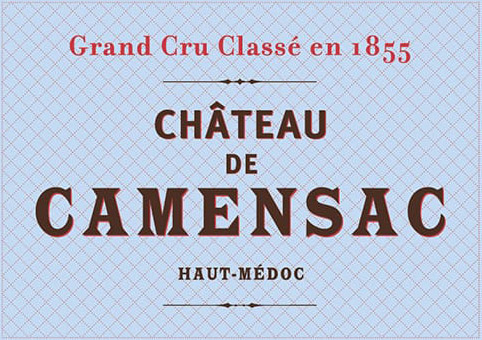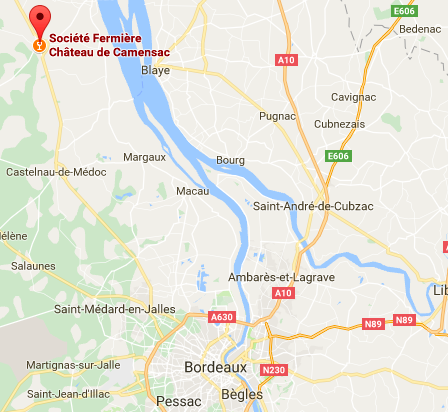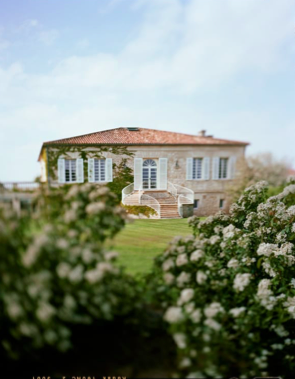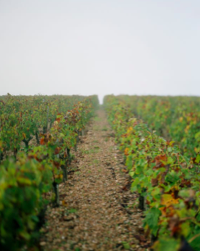
History

Jacques Merlaut came from a bourgeois Bordeaux family, who kept themselves rather far from the vine. In the image of Mauriac, they were more active in the judiciary and the exploitation of the Landes forest. So Jacques started by reading law. Not judging this to hold much excitement for the future, he changed direction and entered HEC, a prestigious French Business School. At the time, the French were drinking 350 litres per person per year. Jacques became a dealer in « plonk », a not very agreable expression referring to someone who sells wine without really caring much about quality. But France was thirsty.
Naturally, his offices were in Bercy, an enclave of Paris on the banks of the Seine dedicated to this type of trade. The volumes traded gave this area an exciting « trading floor » atmosphere.
Jacques had lots of fun and made a very good living. Among his friends was a very talented man of Spanish origin, with whom be got on well. Later, each returning to his roots, the first created the Taillan group, made up of several merchants in France including Ginestet in Bordeaux, backed by 450 hectares in the Médoc consisting of classed growths and the like (Chasse-Spleen and Gruaud-Larose among others). The second, Enrique Forner, created Marques de Caceres, the benchmark for Rioja throughout the world.
 Jacques was a visionary. In the light of the seventies, he sensed that consumption trends would change to favour quality over quantity, to say nothing of the health concerns implicit in heavy individual wine consumption, which would be sure to be raised by the authorities. He invested in different properties and merchant in Bordeaux and encouraged his Spanish friend to join him there. To show the sincerity of his invitation, he proposed taking 25% of a classed growth that was on the market, the rest being reserved for his friend : Camensac. This was in 1964. Enrique Forner therefore became owner of Château de Camensac, situated in the commune of Saint-Laurent-du-Médoc, an 1855 growth in the Haut-Médoc.
Jacques was a visionary. In the light of the seventies, he sensed that consumption trends would change to favour quality over quantity, to say nothing of the health concerns implicit in heavy individual wine consumption, which would be sure to be raised by the authorities. He invested in different properties and merchant in Bordeaux and encouraged his Spanish friend to join him there. To show the sincerity of his invitation, he proposed taking 25% of a classed growth that was on the market, the rest being reserved for his friend : Camensac. This was in 1964. Enrique Forner therefore became owner of Château de Camensac, situated in the commune of Saint-Laurent-du-Médoc, an 1855 growth in the Haut-Médoc.
The two families remained in business together until Enrique decided in 2005 to withdraw from Bordeaux, and entrusted the future of the château to two members of the Merlaut family. Jean, son of Jacques, and Céline Villars-Foubet, his granddaughter. Before this, there is little information about the successive owners of Camensac. We know that a family of English origin, the Popps, held it at the time of the classification. That a noble family, de la Grandière de Tournadre, held it until its purchase by a wine merchant family from the north of France, the Cuveliers, who today own Léoville Poyferré. It was they who sol dit to Forner. Note that the first maps of France in the 17th century already reported a farmhouse at the site of the château, probably a dependency of the fiefdom of Lamarque.
The Terroir
 The stones that make up the bulk of the Médoc gravel soil rolled down from the mountains feeding the Garonne, the Dordogne and their tributaries. The Gironde, where these two rivers flow out, much larger than today, deposited them on limestone or clay – limestone soil when the Quaternary ice age contracte dit and reduced its bed. Their spread, prevented on the right bank by relief, was entirely on the left, the Médoc, where they encountered no rough patches. The drop in the river uncovered two deposits of gravel. The oldest (tertiary), logically furthest from the bank, eroded by a few thousand more years, is composed of fine gravel mixed with coarse sand. It is called « Villafranchian ». The most recent (Quaternary) is made of a mass of thicker and orangey (ferrous) stones, called Gunz Gravel.
The stones that make up the bulk of the Médoc gravel soil rolled down from the mountains feeding the Garonne, the Dordogne and their tributaries. The Gironde, where these two rivers flow out, much larger than today, deposited them on limestone or clay – limestone soil when the Quaternary ice age contracte dit and reduced its bed. Their spread, prevented on the right bank by relief, was entirely on the left, the Médoc, where they encountered no rough patches. The drop in the river uncovered two deposits of gravel. The oldest (tertiary), logically furthest from the bank, eroded by a few thousand more years, is composed of fine gravel mixed with coarse sand. It is called « Villafranchian ». The most recent (Quaternary) is made of a mass of thicker and orangey (ferrous) stones, called Gunz Gravel.
The north-east side of the mound of Camensac, at 23 metres, marjs the end of the layer of Gunz gravel which starts in Saint-Julien. It fades away before covering the Villafranchian gravel. It is the same as that found in Pessac-Léognan. Now these two types of soil combine their strenghts in the wine of Camensac, producing a certain north Médoc minerality and the floral accents of Pessac.
Owners: Céline Villars-Foubet & Jean Merlaut
Manager: Claire Thomas-Chenard
Oenologist: Eric Boissenot

Château de Camensac Haut-Médoc
Terroir: The style of Camensac’s wines is explained by the geographical location and the micro-climate, with mild winters and hot summers but which is also oceanic, favoring healthy growth and well-ripened grapes, combined with a deep gravel terroir, brought by the river (Villafranchian gravel as in Pessac-Léognan and Gunzian gravel as in the St Julien appellation).
Production Area: 86 hectares
Soil: Fine and deep gravel on chalky clay substratum
Grape Varieties: Cabernet Sauvignon, Merlot
Plant Density: 10,000 vines/hectare
Average Age of the Vines: 20 years old
Viticulture: Ploughing. Sustainable agriculture and biodynamic trials on 7 hectares. HEV 3 (High Environmental Value) certification obtained in 2021 and implementation of an agroecological programme.
Harvest: Selective manual harvests, by grape variety, the age of the vines, and the terroir. Sorting of the grapes in the vineyard, then on reception of the harvest on a sorting table.
Vinification: Destemming and crushing. Alcoholic fermentation at 28°C (about 6 days) followed by maceration (about 3 weeks). Daily pumping over and/or punching down. Run-off and pressing (pneumatic press). Transfer to barrels. Malolactic fermentation in barrels
Aging: 14-18 months in French oak barrels (60% new barrels). Regular topping up and racking. Fining with egg white and a final racking before bottling.
Tasting Notes: The wine is bright and clear with a dark color. There are recurrent aromas of black pepper and rose. The structure is fine with plenty of substance on the mid-palate. This is a balanced, powerful wine. The finish is very long, recalling the red fruit of the initial nose with well-integrated oak.
Food Pairings: Wines often go very well with food or dishes from the same region! Here are some dishes that go well with Château de Camensac: Entrecote Bordelaise, roast duck, rack of lamb, tournedos with morel mushrooms, warm dark chocolate lava cake, etc. This list of dishes is not exhaustive. It can also be served with mini-appetizers, starters or cheeses.
Average Production: 200-300,000 bottles

La Closerie de Camensac
Overview: La Closerie de Camensac is the second wine of Château Camensac.
Location: The vines are situated at the edge of the Saint-Julien appellation, in the commune of Saint-Laurent-Médoc.
Terroir: Gravelly and limestone soils
Grape Varieties: Merlot, Cabernet Sauvignon (young vines)
Harvest: Hand picked
Vinification: In stainless steel and concrete tanks (epoxy lined) with temperature control
Tasting Notes: Well-balanced and elegant, this wine reveals notes of raspberry, prune, and toasted oak.


